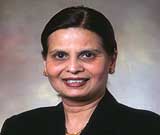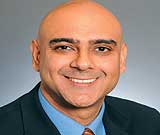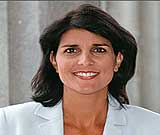Community Mobilisation
With the increase in population of Indian immigrants, cultural, religious and regional organisations mushroomed at a rapid speed; some organising themselves into national bodies. Indian professionals, particularly physicians who had problems of recognition of their professional degrees and attainments formed their own associations at local and national levels. In large cities, regional umbrella groups such as the Federation of Indian American Associations(FIA) were formed, predominantly to celebrate India Independence day, India Republic Day, etc.
During the 1970s and 1980s, there were three dominant country-wide organisations, namely, the National Federation of Indian American Associations (NFIA), Indian American Forum for Political Education (IAFPE) and Association of Indians in America(AIA), which promoted the interests and aspirations of the people of Indian origin. During the 1980s, there were immigration reform bills proposing drastic reduction in the quota for family reunification. These three national organisations went all out to fight against any reduction in the family reunification quota. They reached out to the Indian community in the US, joined hands with other immigrant communities, collected thousands of petitions opposing the new bills, and worked with many members of Congress sympathetic to the cause. After a long struggle, the US Congress yielded to the combined strength of the immigrant communities, accommodated the new realities and kept the family reunification numbers intact in the new bill which was enacted into law.
|
Indian Americans have dared to turn to politics to achieve their vision and to raise the profile of their marginalised community. Indian Americans may not have any constituency with an Indian majority electorate but some political campaigns revolve around them for their fund raising capabilities |
In 1987, the US aid package to Pakistan included supply of AWACS and other highly sophisticated arms to Pakistan. The leadership of these organizations again mobilised the community for the security of their motherland, brought busloads of Indian Americans to Washington DC from the neighboring states including New York and New Jersey, paraded the halls and corridors of the US Congress and the White House. They waged an impressive and vigorous campaign of opposing the supply of highly sophisticated military equipment to Pakistan, educated the members of the Congress about the potential dangers of such supplies, and testified before the Senate sub-committee, a rare honour. History is witness, Pakistan did not get the sophisticated military hardware. During the US-India civil nuclear cooperation deal which involved transfer of nuclear technology and material from the US to India, initiated during Prime Minister Manmohan Singh’s visit to the US in July 2005 and re-affirmed during President George Bush’s visit to India in March 2006, the Indian American community played a proactive role in ensuring the passage of the bills introduced in Congress.
 |
 |
 |
| Swati Dandekar |
Satveer Chaudhary |
Nikki Randhawa |
Besides NFIA, IAFPE and AIA, other organisations including the Global Organization of People of Indian Origin (GOPIO), Indian American Friendship Council, the US-India Political Action Committee (USINPAC) and some others as also some leading Indian American activists, Swadesh Chatterjee, Ramesh Kapur, Inder Singh, Krishna Srinivasa, Sant Chatwal, Sanjay Puri, Rajen Anand, Piyush Agarwal and several others continued massive campaign for three years to educate, convince and influence lawmakers for the passage of the two bills (2006 and 2008) for the unprecedented landmark deal.
Another Indian American organization, the American Association of Physicians of Indian Origin (AAPI) which has acquired a high profile, was founded in 1984 with a goal to fight restrictions against recognition of foreign medical graduates. It is an umbrella organisation for more than 130 member associations nationwide and serves the interests of over 42,000 Indian American physicians. Since its formation, AAPI has steadily expanded its role and responsibilities. According to AAPI president Hemant Patel, “We are making a difference in improving the quality of medical education and patient care by working closely with public bodies and governments of both USA and India.” AAPI has also established high level partnership with the government and policymakers in India.
Political Empowerment
In 1987, an Indian community activist, Dr Joy Cherian was chosen for presidential appointment as US Commissioner of Equal Employment Opportunity Commission. It was the first high ranking appointment of an Asian by the president of the US. Dr Cherian’s appointment to sub-cabinet level position by president Ronald Reagan received swift approval from the Senate. The Asian media extolled it as a major milestone and Indian Americans were elated that their community received such high recognition. The successive administrations made several high ranking appointments of Indian Americans including those of Dr Rajen Anand as executive director of the Center for Nutrition Policy, Bobby Jindal as assistant secretary of health, Gopal Khanna and Karan Bhatia. There are many more who have been appointed to various committees/councils at city, county and state levels.
Indian Americans do not form a significant “voting bloc” but do want political empowerment which would not come by seeking appointments only. They began organising fund raising events for political candidates at city, county, state and federal levels. However, their campaign contributions initially translated into limited political clout but of late, Indian Americans are becoming a political force to reckon with. Some ambitious Indian Americans proactively engaged themselves in the political process of their adopted country. They had no constituency in any part of the United States where only Indians could elect one of their own. But they had a role model in Dalip Singh Saund who in 1956 was elected to the U.S. Congress from a congressional district with a negligible number of Indian American votes. Saund was a trailblazer and many tried to follow his pioneering trail and some succeeded at city, county and state level. In 2004, Oxford-educated Bobby Jindal who was born of immigrant parents in the US, was elected Congressman from Louisiana. Just three years later in 2007, Jindal at 36, was elected governor of Louisiana and became the first Indian-American chief executive of a state in the US.
Since the late 1980s, Indian Americans have started taking a more active role in both Democrat and Republican political parties. They also ventured to learn the rules of political empowerment and their political activism has shown results in several Indian Americans getting elected as legislators at the state level. Kumar Barve is the majority leader in the state of Maryland, Satveer Choudhary is state senator in Minnesota and Swati Dandkar became state senator in 2008 in Iowa after holding the state assembly seat for three terms. Upendra Chivukula has been assemblyman in New Jersey since 2002 and Jay Goyal at the young age of 26 was elected in 2006 as state legislator in Ohio. Nikki Randhawa Haley has been in South Carolina state assembly since 2004 while Raj Goyle has been a state assemblyman in Kansas since 2006.
David Dhillon, a third generation Indian American, was mayor of El Centro from 1985 to 2001. Dhillon’s grandfather came from India and settled in El Centro, Imperial Valley in California where many Indians during the earlier part of the last century had settled. Dalip Singh Saund had spent most of his life in the Imperial Valley which was part of his congressional district. Harry Sidhu was elected council member in 2004 of Anaheim City, home of Disneyland, while Harvinder Anand got elected as mayor of a small, affluent community in New York State in 2007. Gurpal Samra is the mayor of Livingston (population over 10,000), near Sacramento, California. In Yuba City where Indian Americans constitute 10 per cent of the population, two city council members, Kash (Kashmir Singh) Gill and Tej (Tejinder Singh) Mann were elected in 2006. This was the first time since the settlement of the first batch of Sikhs in the area, in the beginning of twentieth century that two Sikhs with farming background have been elected. They are educated and have deep civic roots in the city. Kash Gill is vice president of the local Butte Community Bank while Tej Mann is the Environment Health director of Yuba County.
These Indian Americans have dared to turn to politics to achieve their vision and to raise the profile of their marginalised ethnic community. The voters who elected the Indian American law makers are mainstream Americans and not just Indian Americans who form a negligible percentage of the electorate. Indian Americans may not have any constituency with an Indian majority electorate but some political campaigns revolve around them for their fund raising capabilities.
Indians who came in 1960s and 1970s are, by and large, rooted in the US. They have worked their way up the ranks of American companies and have also moved with astonishing speed into politics. They keep increasing the number of their elected representatives at various levels when elections take place in the US. The Indian American lobby on Capitol Hill is also increasingly becoming effective and showed measurable result at the passage of Indo-US nuclear deal by the US Congress.
|